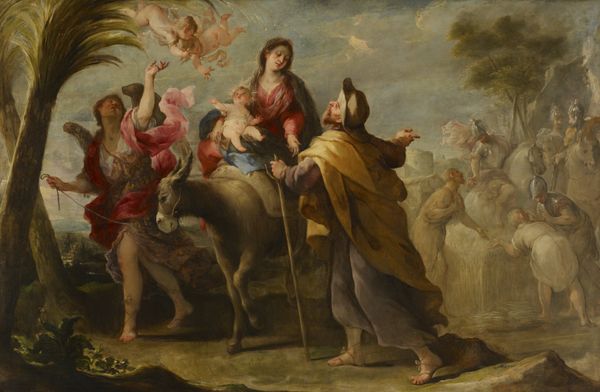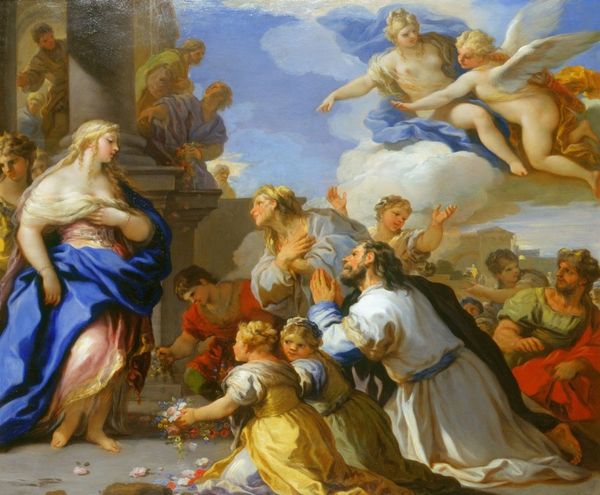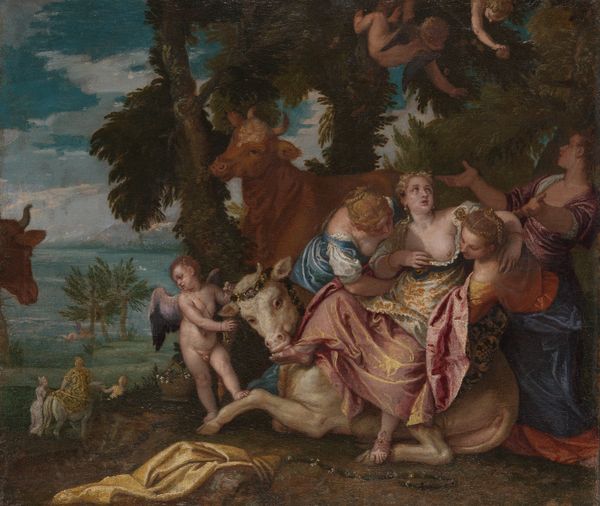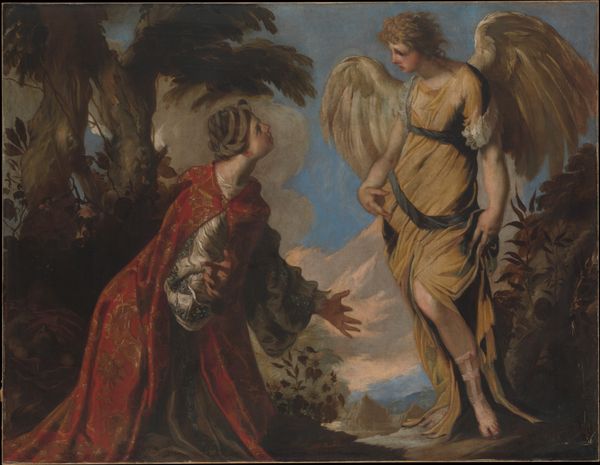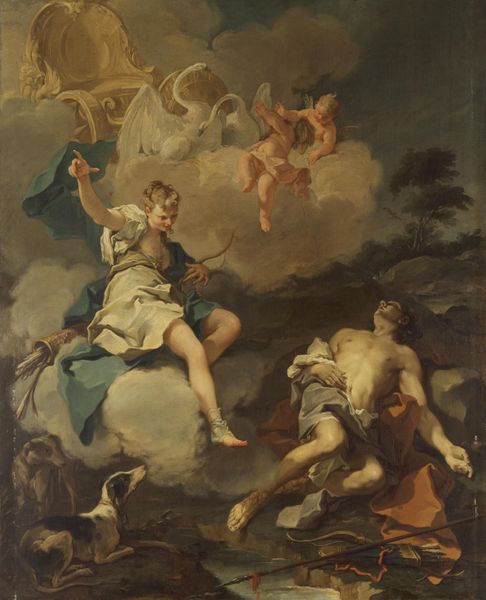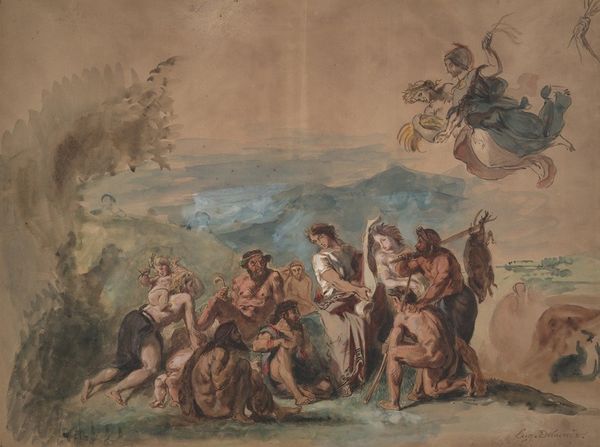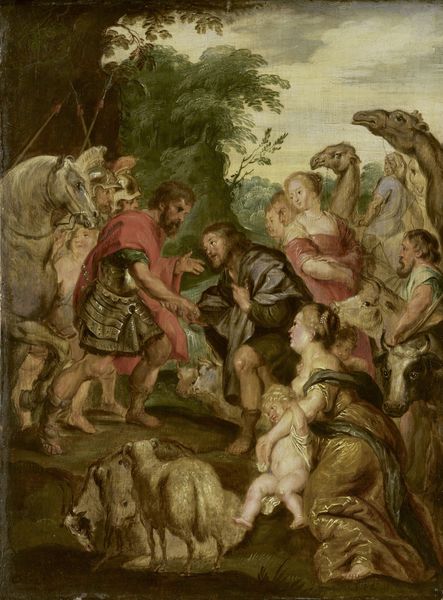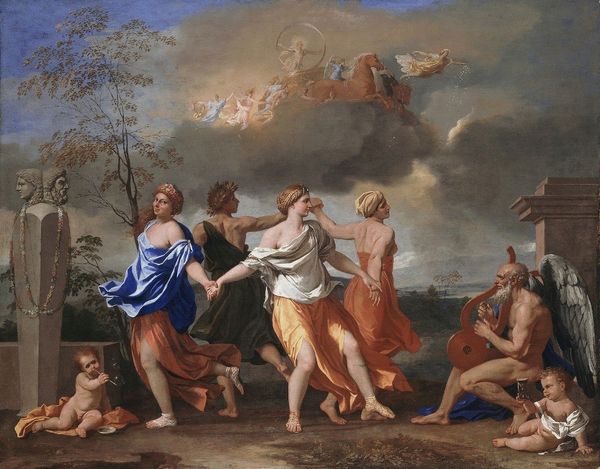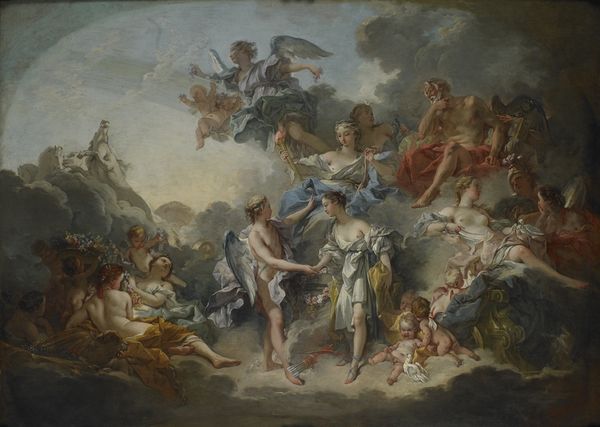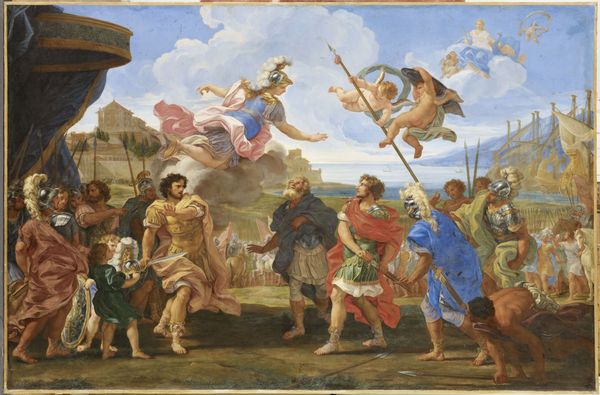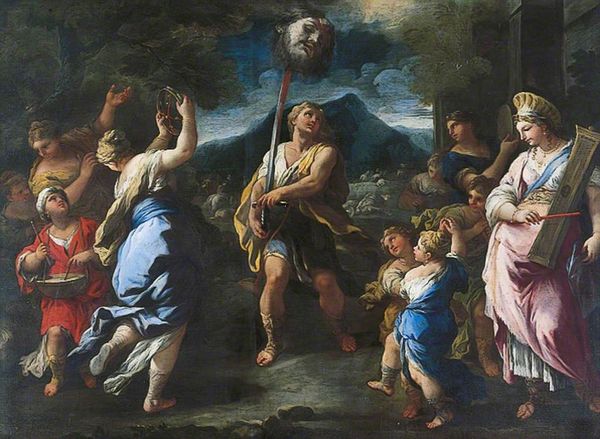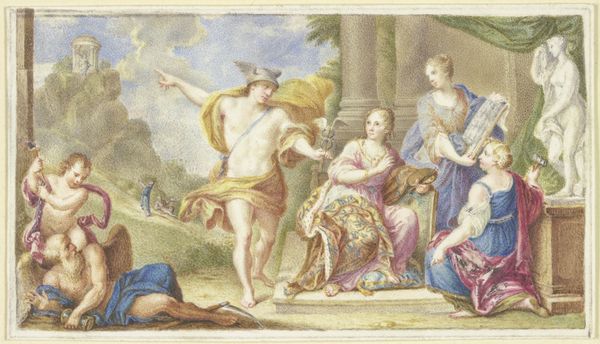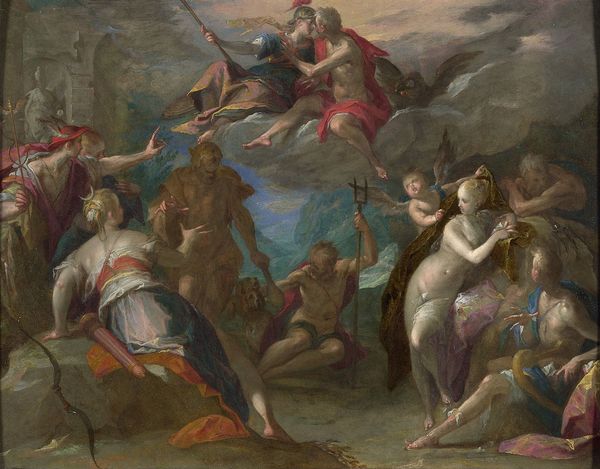
oil-paint, oil
#
woman
#
baroque
#
oil-paint
#
oil
#
landscape
#
figuration
#
oil painting
#
genre-painting
#
history-painting
Dimensions: 58.0 x 81.7 x 0.4 cm
Copyright: Public Domain
Editor: So, this is Anton Kern's "Rinaldo and Armida in the Magic Forest," painted between 1730 and 1738. It’s an oil painting currently housed at the Städel Museum. I’m really struck by the theatrical quality – it feels like a scene pulled directly from a play. What is your interpretation? Curator: This piece is fascinating when considered through the lens of 18th-century aristocratic patronage. Genre and history painting served specific social functions; the visual display of erudition and taste became a measure of social standing. Do you see how Kern situates the viewer as a participant, almost complicit, within the drama? Editor: That’s interesting, I hadn't thought of it that way. Complicit how? Curator: Note the composition - the scene unfolding feels meticulously staged for our benefit. The figures almost perform, enacting a moment derived from Torquato Tasso's *Jerusalem Delivered*. What do you think this “staging” achieves in relation to the societal expectations placed upon art at that time? Editor: I suppose it's a way of signaling wealth and education, demonstrating familiarity with classical stories and artistic conventions. So it's less about genuine emotion and more about social performance? Curator: Precisely. And that performance plays out not only within the painting, but also in its intended reception. By understanding the painting's history we gain a richer sense of what the social function of visuality had back then. Editor: That adds so many layers! I always focus on what the artist is trying to say. It's incredible to think about how the audience also shapes a work. Curator: Exactly. Remembering how historical context informs our own gaze will help in better recognizing those conditions shaping our understanding of this work. Editor: Thanks, it will influence how I perceive art from now on.
Comments
stadelmuseum almost 2 years ago
⋮
Armida, an ally of the Saracens, has fallen desperately in love with the heroic crusader Rinaldo. She has bewitched him and abducted him to her enchanted island. Freed from the allure by his companions, Rinaldo now wants to break the next spell. He enters an enchanted forest over which Armida has cast a spell, and she once again attempts to seduce him. As the raised shield and brandished sword indicate, this time Rinaldo remains steadfast. He breaks the magic spell she has cast over the forest and thus provides the army of crusaders with wood as material for their conquest of Jerusalem. Torquato Tasso's epic 'La Gerusalemme liberata', set at the time of the Crusades, provides the literary basis for this picture, which remains full of charm despite the dramatic elements. The story was used in a variety of ways in Baroque music theatre and also in painting. Anton Kern, to whom this panel painting is ascribed, was a native of Bohemia and worked with Giovanni Battista Pittoni in Venice and, from 1741 onwards, as a court painter in Dresden.
Join the conversation
Join millions of artists and users on Artera today and experience the ultimate creative platform.
